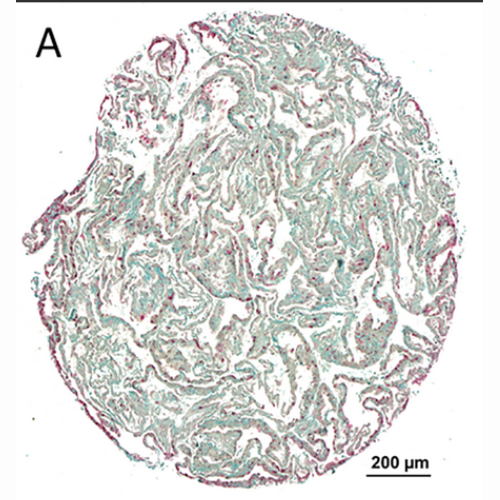Treatment with XAV-939 prevents in vitro calcification of human valvular interstitial cells.
The development of a substance or inhibitor-based treatment strategy for the prevention of aortic valve stenosis is a challenge and a main focus of medical research in this area. One strategy may be to use the tankyrase inhibitor XAV-939, which leads to Axin stabilisation and subsequent destruction of the β-catenin complex and dephosphorylation of β-catenin. The dephosphorylated active form of β-catenin (non-phospho-β-catenin) then promotes nuclear transcription that leads to osteogenesis. The aims of the present study were to develop an experimental system for inducing in vitro calcification of human aortic valvular interstitial cells (VICs) to investigate the potential anti-calcific effect of XAV-939 and to analyse expression of the Wnt signalling proteins and Sox9, a chondrogenesis regulator, in this model. Calcification of human VIC cultures was induced by cultivation in an osteogenic medium and the effect of co-incubation with 1μM XAV-939 was monitored. Calcification was quantified when mineral deposits were visible in culture and was histologically verified by von Kossa or Alizarin red staining and by IR-spectroscopy. Protein expression of alkaline phosphatase, Axin, β-catenin and Sox9 were quantified by western blotting. In 58% of the VIC preparations, calcification was induced in an osteogenic culture medium and was accompanied by upregulation of alkaline phosphatase. The calcification induction was prevented by the XAV-939 co-treatment and the alkaline phosphatase upregulation was suppressed. As expected, Axin was upregulated, but the levels of active non-phospho-β-catenin were also enhanced. Sox9 was induced during XAV-939 treatment but apparently not as a result of downregulation of β-catenin signalling. XAV-939 was therefore able to prevent calcification of human VIC cultures, and XAV-939 treatment was accompanied by upregulation of active non-phospho-β-catenin. Although XAV-939 does not downregulate active β-catenin, treatment with XAV-939 results in Sox9 upregulation that may prevent the calcification process.

- PLoS One. 2018 Dec 7;13(12)
- 2018
- Medical Biology
- 30532256
- PubMed
Enabled by:
